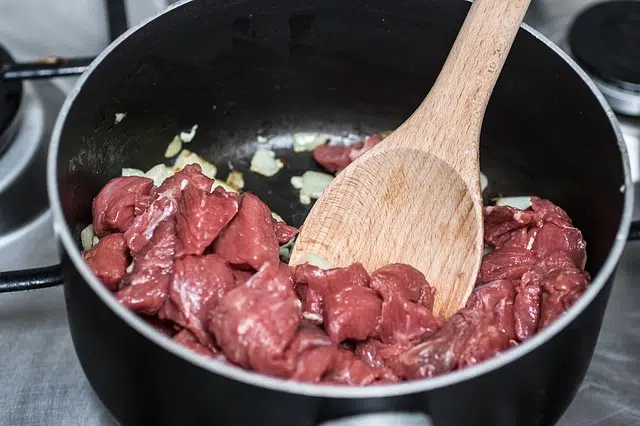
Saute vegetables in a non-stick pan
The adjective non-stick allows us to describe that which prevents adhesion : the physical union of different elements. It is common for the term to be used with reference to a product or substance.
For kitchen containers
Generally the concept of non-stick is used in the kitchen . Containers such as pots and pans are usually non-stick to prevent food from sticking to their surface .
One of the best-known non-stick substances is Teflon . This is the name given to a polymer that offers great resistance to corrosion and heat.
Scientifically, Teflon is called polytetrafluoroethylene . This chemical compound stands out for its impermeability and for having a very low friction coefficient , which means that it exerts minimal opposition to the sliding of bodies on its surface .
Non-stick pans usually have an aluminum structure, to which a Teflon-based coating is applied. Then a finish is made with titanium , stone or another material to reinforce the Teflon.
The Teflon problem
It is important to mention that, some time ago, Teflon contained perfluorooctanoic acid , a substance classified as possibly carcinogenic by the International Cancer Research Center of the World Health Organization ( WHO ). Faced with this reality, perfluorooctanoic acid was banned : thus, non-stick pans that now use Teflon no longer include that substance and are therefore safe.
It all started when many complaints emerged that had been silenced for several years due to economic interests. This gave rise to a scientific investigation focused on citizens living around a chemical plant with significant exposure to perfluorooctanoic acid , which yielded alarming results: this substance had an apparent relationship with various health problems, such as ulcerative colitis, testicular cancer, pregnancy-induced hypertension and thyroid disease.
Maintenance
To keep non-stick containers in good condition, it is ideal to use them with silicone or wooden utensils to avoid scratching them. In no case should metal utensils be used, since if we wear out the non-stick film on the containers, they not only lose their main attractiveness but we run the risk of the residue mixing with the food.
Regarding washing , it should be done by hand, with the help of a very soft sponge, or with the back of a normal one. Given the nature of the non-stick material, it is not necessary to "scrape" food remains when cleaning it, as they come off very easily. Additionally, it is recommended to wait for it to cool before washing. On the contrary, it is not good to place these containers in the dishwasher, since their processes are usually too aggressive for them.

It is recommended to use wooden or silicone utensils for non-stick containers
The temperature at which we cook in a non-stick container should be low or medium, but never high . Ignoring this indication can deteriorate it and, in the long term, negatively affect our health. After all, we do not roast food in a non-stick pot or pan, but rather we cook it for recipes in which the combination of flavors after slow cooking matters.
Finally, since buying a non-stick container involves a higher financial investment than a traditional metal one, we should also protect it when storing it, avoiding stacking it with others . If we have no other option, due to lack of space, then it is recommended to place soft cloth cloths between them. It is also possible to fix some hooks on the wall to hang them one by one, leaving them closer at hand and avoiding potential scratches.
